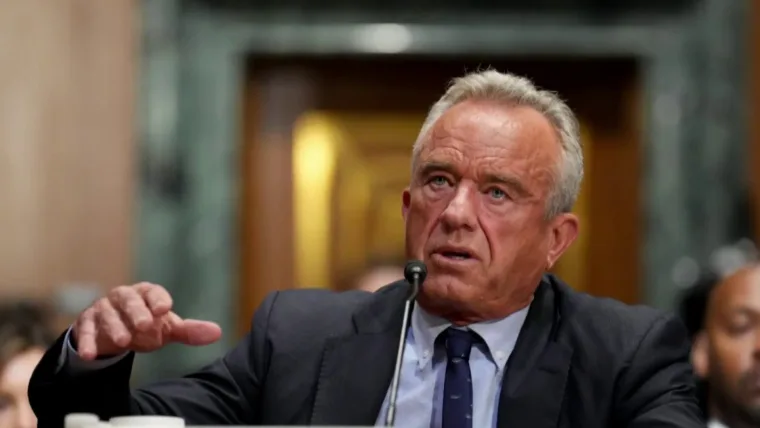Picture this: a small, rural state battered by floods, its farms and small businesses struggling to recover from over $1 billion in damages. Now imagine that state passing a groundbreaking law to make fossil fuel giants like ExxonMobil and Chevron pay for the climate chaos they’ve fueled. That’s Vermont’s story, and it’s at the heart of a heated legal showdown with the Trump administration’s Department of Justice (DOJ). The DOJ is suing to dismantle Vermont’s Climate Superfund Act, a first-of-its-kind law that holds Big Oil accountable for climate damages. This battle isn’t just about one state—it’s a clash over who should bear the cost of climate change: taxpayers or polluters. Let’s unpack this high-stakes fight, explore its implications, and see why it matters to you.
What Is Vermont’s Climate Superfund Act?
Vermont’s Climate Superfund Act, passed in May 2024, is a pioneering law designed to make fossil fuel companies pay for climate-related damages in the state. Modeled after the federal Superfund program, it targets companies that emitted over 1 billion metric tons of greenhouse gases between 1995 and 2024, requiring them to fund projects like flood protection and infrastructure upgrades. The law aims to shift the financial burden from Vermonters to the polluters responsible for intensifying extreme weather events.
How the Law Works
The state will assess the total cost of climate damages, such as the $1 billion from 2023 floods, and use federal data to determine each company’s share based on their emissions. By January 2026, Vermont’s Agency of Natural Resources will report these costs, with payments funding resilience projects like upgraded stormwater systems. It’s a “polluter pays” model, rooted in the idea that those who caused the mess should clean it up.
Why Vermont Took the Lead
Vermont, one of the fastest-warming states in the U.S., has faced devastating floods in 2023 and 2024, decimating homes, roads, and businesses. The state’s lawmakers, backed by environmental groups like the Vermont Public Interest Research Group (VPIRG), saw the law as a way to protect citizens from bearing the full cost of climate disasters. It’s a bold move for a small state to take on global oil giants.
The Trump DOJ’s Legal Challenge
On May 1, 2025, the Trump administration’s DOJ filed a lawsuit in the U.S. District Court for the District of Vermont, arguing that the Climate Superfund Act is unconstitutional. The DOJ claims the law oversteps state authority, interferes with federal energy policy, and violates the Clean Air Act by regulating global emissions. A motion for summary judgment filed on September 16, 2025, urged the court to strike down the law without a trial, calling it a “lawless experiment” that could cost oil companies billions.
The Executive Order Behind the Lawsuit
The DOJ’s actions stem from President Trump’s April 8, 2025, executive order, “Protecting American Energy From State Overreach.” This order directed Attorney General Pam Bondi to halt state laws that “burden” fossil fuel production, specifically targeting Vermont and New York’s climate superfund laws. Critics see this as a political move to shield Big Oil, a major Trump campaign donor.
A Broader Attack on State Climate Efforts
Vermont isn’t alone. The DOJ also sued New York over its similar Climate Change Superfund Act, which seeks $75 billion from oil companies, and preemptively sued Hawaii and Michigan to block potential lawsuits against fossil fuel firms. This aggressive strategy reflects the administration’s push for “energy dominance,” prioritizing fossil fuel interests over state-led climate accountability.
Why This Fight Matters
This legal battle is more than a courtroom drama—it’s a test of whether states can hold polluters accountable for climate damages. Vermont’s law could set a precedent for others, with states like California, Maryland, and Massachusetts considering similar measures. If the DOJ succeeds, it could stifle these efforts, leaving taxpayers to foot the bill for climate disasters.
A Personal Connection to the Stakes
Growing up in a rural area, I’ve seen how floods can devastate small communities—farms washed away, local shops shuttered. My cousin’s family in Vermont lost their barn in the 2023 floods, and recovery was a slow, costly process. Vermont’s law feels personal: it’s about ensuring families like theirs aren’t left to rebuild alone while oil companies profit.
The Legal Arguments: Vermont vs. DOJ
The DOJ’s case hinges on several claims, but Vermont and its supporters are fighting back with robust counterarguments. Let’s break down the key points of contention.
DOJ’s Claims
The DOJ argues that Vermont’s law is unconstitutional because it:
- Violates the Clean Air Act, which governs emissions regulation.
- Infringes on federal authority over interstate and foreign commerce.
- Punishes companies for legal past actions, violating due process.
- Threatens national energy security by burdening fossil fuel producers.
The DOJ insists the law regulates global emissions, which falls under federal jurisdiction, and could impose “billions or even trillions” in liability on oil companies.
Vermont’s Defense
Vermont’s Attorney General Charity Clark counters that the law doesn’t regulate emissions but seeks compensation for damages caused by past emissions. Backed by groups like the Conservation Law Foundation, the state argues it’s within its rights to protect citizens from climate harm. A recent amicus brief by economists, including Nobel laureate Joseph Stiglitz, claims the law’s one-time payments won’t significantly impact energy prices or company viability.
The Role of Attribution Science
The law relies on attribution science, which links specific emissions to extreme weather events. A 2025 Nature study found that emissions from 180 fossil fuel producers contributed to over 200 heat waves from 2000 to 2023. This science bolsters Vermont’s case, showing a clear connection between Big Oil’s actions and local damages.
Comparing Vermont’s Law to Other State Efforts
Vermont’s law isn’t alone—other states are pursuing similar climate accountability measures. Here’s how they stack up:
| State | Law/Proposal | Status | Key Features |
|---|---|---|---|
| Vermont | Climate Superfund Act | Enacted May 2024 | No monetary cap, targets 1995–2024 emissions |
| New York | Climate Change Superfund Act | Enacted Dec 2024 | $75 billion over 25 years, 2000–2024 emissions |
| California | Proposed Superfund Bill | Pending | Modeled after Vermont, cap-and-trade focus |
| Maryland | Proposed Superfund Bill | Vetoed in 2025 | Similar to Vermont, focused on resilience |
New York’s law sets a specific funding target, while Vermont’s open-ended approach could lead to higher payouts. Both face lawsuits from the DOJ and industry groups like the American Petroleum Institute (API).
Pros and Cons of Vermont’s Climate Superfund Act
Here’s a balanced look at the law’s strengths and challenges:
Pros
- Shifts Costs to Polluters: Taxpayers are spared the burden of climate disaster recovery.
- Funds Resilience: Supports projects like flood defenses and infrastructure upgrades.
- Sets a Precedent: Could inspire other states to hold Big Oil accountable.
- Backed by Science: Uses attribution science to link emissions to damages.
Cons
- Legal Risks: Faces lawsuits from the DOJ, API, and 24 Republican-led states.
- High Costs: Vermont’s small budget may struggle with legal battles against Big Oil.
- Economic Concerns: Critics argue it could raise energy prices, though economists dispute this.
- Implementation Delays: Cost assessments and payments won’t start until 2026–2028.
The Bigger Picture: Climate Accountability in the U.S.
Vermont’s law is part of a growing movement. Since 2017, over 30 states, cities, and tribes have sued fossil fuel companies for climate damages, often alleging deception about climate risks. The Supreme Court has declined to intervene in cases like Honolulu’s, allowing state courts to handle them. This trend suggests courts are open to climate accountability, but the DOJ’s lawsuits could change the landscape.
A Farmer’s Perspective
I spoke with a Vermont farmer, Tom, whose fields were flooded in 2023. “We lost half our crops, and the state’s help wasn’t enough,” he said. “If oil companies paid their share, we could rebuild stronger—better drainage, new equipment. It’s only fair.” Tom’s story underscores why Vermonters see this law as a lifeline, not a luxury.
People Also Ask (PAA)
What is Vermont’s Climate Superfund Act?
The Climate Superfund Act, passed in May 2024, requires fossil fuel companies with emissions over 1 billion metric tons from 1995 to 2024 to pay for climate damages in Vermont, such as flood recovery and infrastructure resilience.
Why is the Trump DOJ suing Vermont?
The DOJ claims the law is unconstitutional, arguing it violates the Clean Air Act, federal authority over commerce, and due process by retroactively punishing legal actions. They seek to block it to protect fossil fuel interests.
Can states hold oil companies accountable for climate change?
Yes, states have the authority to seek compensation for damages, as seen in Vermont and New York’s laws. Courts, like the Boulder case, have ruled that such lawsuits aren’t preempted by federal law.
How will Vermont use the funds from the law?
Funds will support climate adaptation projects, including flood protections, upgraded roads and bridges, and retrofitted sewage systems to mitigate future extreme weather impacts.
How to Stay Informed and Get Involved
Want to follow this issue or support climate accountability? Here are some steps:
- Read Trusted Sources: Visit VTDigger or The Guardian for updates on Vermont’s law and related lawsuits.
- Support Advocacy Groups: Organizations like the Vermont Public Interest Research Group (VPIRG) and Conservation Law Foundation are defending the law.
- Contact Lawmakers: Urge your state representatives to consider similar climate superfund bills.
- Explore Attribution Science: Learn more about how emissions are linked to disasters at Carbon Majors.
The Best Tools for Climate Advocacy
While Vermont’s law is unique, you can engage with climate issues using these tools:
- Carbon Footprint Calculators: Apps like MyClimate or CarbonWatch help you track personal emissions and advocate for change.
- Climate Action Platforms: Join campaigns via 350.org or Fossil Free Media to support polluter accountability.
- Local Advocacy Groups: Connect with groups like VPIRG or the Sierra Club for state-specific climate initiatives.
FAQs
1. Why did Vermont pass the Climate Superfund Act?
Vermont passed the law to make fossil fuel companies pay for climate damages, like the $1 billion in flood losses from 2023, to fund resilience projects and ease the burden on taxpayers.
2. Is the DOJ’s lawsuit against Vermont likely to succeed?
Legal experts like Pat Parenteau argue the DOJ’s case is weak, as the law doesn’t regulate emissions but seeks compensation for damages, a state right. However, the fossil fuel industry’s deep pockets could prolong the fight.
3. How does attribution science support the law?
Attribution science links specific emissions to extreme weather events, like floods in Vermont, providing a scientific basis for holding companies accountable for their share of damages.
4. Are other states following Vermont’s lead?
Yes, New York passed a similar law, and California, Massachusetts, and others are considering superfund bills. At least 12 states plan to introduce them in 2026.
5. How can I support climate accountability?
Join advocacy groups, stay informed via trusted news sources, and urge lawmakers to support polluter-pays policies. Tools like carbon calculators can also help you take action.
Conclusion: A David vs. Goliath Battle
Vermont’s Climate Superfund Act is a bold stand against Big Oil, a small state’s attempt to make polluters pay for the floods and fires ravaging its communities. The Trump DOJ’s lawsuit, backed by industry giants, threatens to derail this effort, but Vermont’s fight is far from over. With science, public support, and legal precedent on its side, the state could inspire a nationwide shift toward climate accountability. As storms grow fiercer and costs mount, this battle asks a simple question: who should pay for the damage—ordinary people or the companies that fueled the crisis? Vermont’s answer is clear, and it’s one worth fighting for. Stay engaged, because this story is just beginning.




